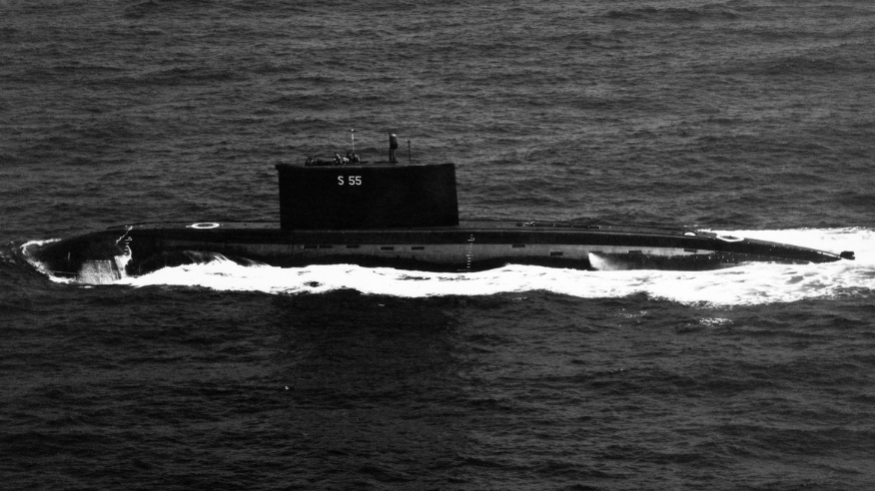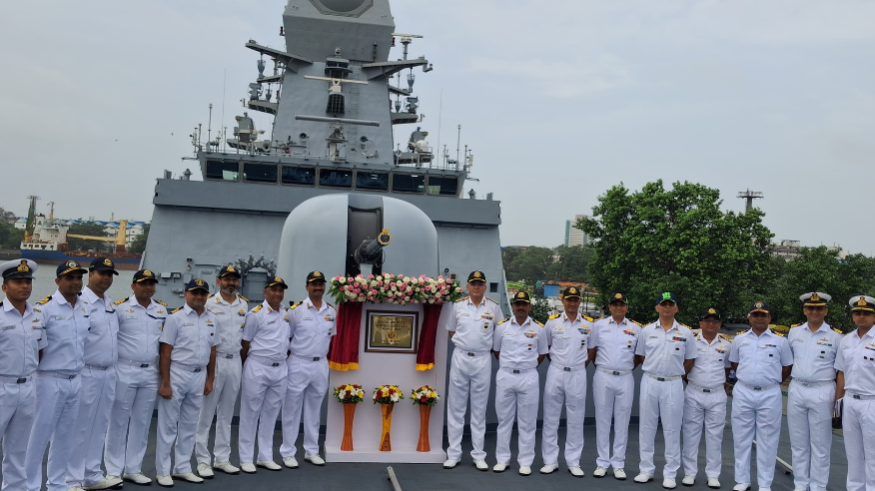In an ageing submarine, an opportunity for the DRDO
The Indian Navy plans to decommission the INS Sindhughosh, the first of ten Kilo class submarines it acquired from the erstwhile Soviet Union and the Russian Federation.
The Sindhughosh was commissioned in 1986 nearly four decades ago. It will be the third Kilo class submarine the navy will have retired— the Sindhurakshak in 2017 after an accident and the Sindhudhvaj at the end of its service life in 2022.
Decommissioning a submarine is a decision taken on a variety of factors chiefly the life of a submarine’s pressure hull which usually has a 30-year lifespan. The Sindhughosh completed a three-year refit and life-extension programme at Zvezdochka shipyard in 2005 which added 15 years to its hull life. The vessel was due for a second life-extension refit in Russia in 2023 but this was not optioned for reasons that are not clear. This has now necessitated its decommissioning. But in the navy’s impending decision to scrap the submarine could lie an opportunity for the Defence Research and Development Organisation (DRDO).
The DRDO has always sought a dedicated trials platform for the various weapons and sensors developed by its laboratories. In the 1990s, the navy transferred one of its older Foxtrot class submarine the INS Karanj as a dedicated trials platform for the ‘Panchendriya’ indigenous sonars. The Panchendriya sonar suite was successfully integrated into various submarine types but the Karanj was retired in 2003 without a successor. This was understandable given the pressure on the Indian Navy’s fleet of dwindling conventional submarines. But in recent years, the DRDO has begun development of a range of cutting-edge indigenous naval weapons and sensors, without a dynamic underwater trials platform.
The DRDO currently operates one such naval platform the INS Anvesh, an 11,300 ton missile range instrumentation ship, purpose-built to test ballistic missile interceptors and crewed by the Indian Navy. The Sindhughosh could be a second such platform for testing underwater technologies.
The vessel can be upgraded with a short refit in country either at the Hindustan Shipyard in Vizag or L&T’s facility in Katupalli. A fully operational submarine will allow for the assessment of performance parameters such as speed, maneuverability and endurance under different operating conditions.
The Sindhughosh’s hull condition could restrict dived depth below the maximum dive depth of 300 metres. These would not constrain a trials platform because most sub-launched weapons like missiles, torpedoes and drones are launched from 50 metres or less. As a trials platform, the submarine could operate close to the coast and not in the deep ocean long-range missions required of a combatant.
There are several other DRDO programmes from mines, drones to Air Independent Propulsion which will benefit from the ready availability of a trials platform. The Sindhughosh can complement the DRDO’s inland water test facilities — the Submersible Platform for Acoustic Characterisation and Evaluation commissioned at a freshwater reservoir in Idukki, Kerala, last April.
The submarine can help the DRDO perfect a range of these underwater technologies. This submarine could also be made available to Indian defence start ups to help them understand the complex dynamics of undersea warfare. There are at least five broad areas in which a trials platform could prove useful :
1) Weapons and sonars:
To test and evaluate the launch and performance of weapons like the submarine-launched variant of the Varunastra heavyweight torpedo. The DRDO’s Naval Science and Technology Laboratory (NSTL) is also developing high-speed supercavitation torpedoes traveling at speeds of over 80 knots. The submarine could also be used to test the efficiency of under-development flank array and towed array sonars.
2) Propulsion technologies:
Air Independent Propulsion (AIP) technology allows conventional submarines to stay underwater for longer periods. There is a fuel-cell module AIP being developed by the DRDO’s Naval Materials Research Laboratory in partnership with L&T and Thermax.
3) Underwater drones :
The DRDO is developing submarine-launched drones or ULUAVs to enhance the lethality of the existing fleet of conventional submarines. These ULUAVs can be launched from torpedo tubes. There are also programs for underwater drone swarms which be controlled from a submarine which acts as a mother ship.
4) Acoustic Stealth:
The submarine could also help scientists understand and improve the acoustic stealth of submarines by reducing their radiated noise and optimizing their acoustic signature.
5) Escape Systems, life support systems:
To test and evaluate escape systems simulating conditions of submarine escape. The safety of personnel in enclosed submarine environments.















Comments